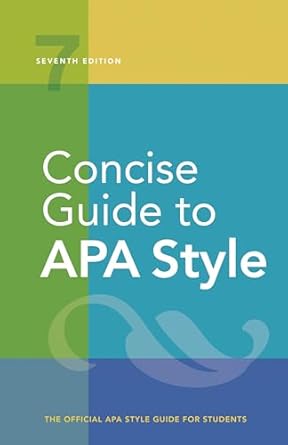[toc]
apa citation guide online sources anthologies more
Concise Guide to APA Style: 7th Edition (OFFICIAL)
Page 283 Review
Decoding Citation Styles: A Deep Dive into APA Guidelines
Navigating the world of academic writing requires a keen understanding of citation styles.
This commentary delves into specific examples provided, offering insights into the nuances of APA (American Psychological Association) style guidelines.
We will explore the treatment of online sources, anthologies, religious texts, and ancient works, highlighting key principles for accurate and consistent referencing.
Online Reference Works and Retrieval Dates
The guidelines emphasize the importance of including retrieval dates for online resources that are continuously updated and not archived.
As the text states:
“When an online reference work is continuously updated (see Section 9.15) and the versions are not archived (as with the APA Dictionary of Psychology and the Merriam-Webster.com Dictionary examples), use “n.d.” as the year of publication and include a retrieval date (see Section 9.16).”
This practice ensures that readers can access the version of the information used at the time of writing.
For stable or archived versions, a retrieval date is unnecessary, as the version is fixed and readily identifiable.
Citing Anthologies
When referencing an anthology, the editor(s) take the author position in the citation.
The text clarifies:
“Provide the editor(s) of the anthology in the author position of the reference.”
“The date refers to the year the anthology was published (for a work included in an anthology, see Example 46).”
For instance, the example provided cites “Gold, M. (Ed.). (1999).
The complete social scientist: A Kurt Lewin reader.” This indicates that M.
Gold is the editor of the anthology, and 1999 is the year of publication.
If referencing a specific work *within* the anthology, the citation format would differ, focusing on the original author and work within the anthology.
Referencing Religious Works
Citing religious texts requires careful attention to detail, including original publication dates and translations.
The provided examples illustrate this:
“King James Bible. (2017).
King James Bible Online. https://www.kingjamesbibleonline.org/ (Original work published 1769)”
“The Qur’an (M.A.
S.
Abdel Haleem, Trans.). (2004).
Oxford University Press.”
“The Torah: The five books of Moses (3rd ed.). (2015).The Jewish Publication Society. (Original work published 1962)”
The citations include the date of the version being cited and, where applicable, the original publication date.
This provides context for the reader and acknowledges the historical significance of the text.
It’s also important to note that specific sections or verses within these texts should be cited accordingly, following guidelines outlined in Section 8.13.
Citing Ancient Greek or Roman Works
Referencing ancient texts presents unique challenges, particularly regarding dating and translation.
The example of Aristotle’s “Poetics” demonstrates how to handle these challenges:
“Aristotle. (1994).
Poetics (S.
H.
Butcher, Trans.).
The Internet Classics Archive. http://classics.mit.edu/Aristotle/poetics.html (Original work published ca. 350 B.
C.
E.)”
The citation includes the approximate date of the original work (ca. 350 B.
C.
E.) and the date of the translation used (1994).
This acknowledges both the historical context and the specific version consulted.
The abbreviation “B.
C.
E.” (Before Common Era) is used to denote dates before the Common Era.
Key Takeaways for Accurate Citations
Based on these examples, several key principles emerge for accurate APA citations:
- Accuracy: Ensure all details, including author names, publication dates, and URLs, are accurate and complete.
- Consistency: Adhere to APA style guidelines consistently throughout your work.
- Context: Provide sufficient context for the reader to understand the source, including original publication dates and translation information when applicable.
- Retrieval Dates: Include retrieval dates for online sources that are continuously updated and not archived.
- Specific Sections: When citing specific sections or verses, follow APA guidelines for specifying those locations within the work (e.g., chapter, verse).
By following these guidelines, writers can ensure that their citations are accurate, consistent, and informative, contributing to the credibility and clarity of their work.
The ability to properly cite sources is an essential aspect of academic integrity and scholarly communication.
Buy full ebook for only $18: https://www.lulu.com/shop/american-psychological-association/concise-guide-to-apa-style-7th-edition-official/ebook/product-rmzpq54.html?page=1&pageSize=4


Leave a Reply